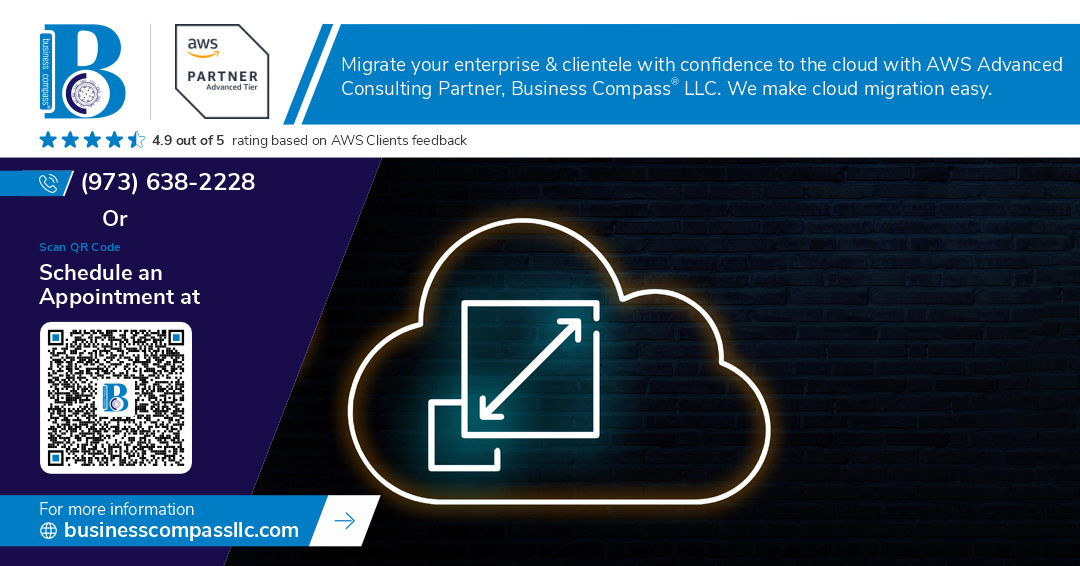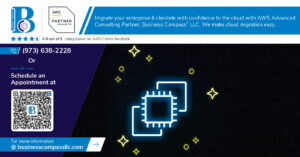Ever had your shopping cart empty itself after spending 20 minutes filling it? That’s stateless architecture saying “sorry, who are you again?”
The battle between stateless and stateful approaches isn’t just developer jargon—it directly impacts whether your users smile or scream at their screens.
By the end of this post, you’ll understand exactly how stateless vs stateful architectures affect scalability, user experience, and system reliability. You’ll finally grasp why some of the world’s most successful applications switch between these approaches like expert chess players.
Think you know which approach powers your favorite apps? The answer might surprise you when we peel back the curtain on how tech giants handle millions of concurrent users without breaking a sweat.
Understanding State in System Architecture
Defining Stateless vs Stateful Systems
Ever tried using an app that forgets what you’re doing every time you click something? That’s essentially what happens in a purely stateless system.
In stateless architecture, each request stands completely on its own. The server doesn’t remember who you are or what you did 30 seconds ago. Every interaction needs all the information necessary to complete that specific action.
Stateful systems are the opposite – they remember you. They keep track of your session data, preferences, and previous interactions. Think of an online shopping cart that saves your items even if you close the tab.
| Stateless Systems | Stateful Systems |
|-------------------|------------------|
| No memory between requests | Maintains session data |
| Higher scalability | More complex to scale |
| Simpler deployment | Requires state persistence |
| Less personalized UX | Richer user experience |
Core Components of State Management
State management isn’t just theoretical – it involves concrete components that make or break your system:
- Session Stores – Where user data lives (Redis, Memcached)
- Data Persistence Layer – Databases that maintain state across sessions
- Caching Mechanisms – For performance optimization
- State Transfer Protocols – How state moves through your system
The magic happens when these components work together seamlessly. Poor implementation of any one element can cause the entire system to feel disjointed to users.
Why State Matters for User Experience
State management directly impacts how users feel about your application. Nobody wants to re-enter information they already provided or lose their work because they switched devices.
The best systems blend stateless and stateful approaches. Microservices might be stateless for scalability, while maintaining user state at the application level.
The most successful applications hide all the complexity from users. They simply experience a system that “remembers” them and responds accordingly. This balance between system architecture and user needs is where the real value lies.
Deep Dive into Stateless Systems
Key Benefits of Stateless Architecture
Stateless architecture is like having amnesia – but in a good way. Your system doesn’t remember past interactions, which sounds terrible until you realize it’s actually a superpower.
First off, scalability becomes almost trivial. Need to handle more traffic? Just spin up more identical servers. No complicated session sharing or sticky sessions – each request stands completely on its own.
The reliability boost is massive too. When servers don’t need to remember anything, they can fail without drama. One server goes down? No problem, the next request simply routes to another available server with zero data loss.
Deployment gets way easier. You can update services without worrying about active user sessions or complex state migrations. Blue-green deployments? A breeze.
And let’s talk costs – stateless systems typically require less memory per server since they’re not storing session data, meaning you can run more instances on the same hardware.
When to Choose Stateless Approaches
Go stateless when you’re building systems that need to scale horizontally without breaking a sweat. It’s perfect for:
- Public-facing APIs with high traffic variability
- Microservices that need independent scaling
- Systems requiring five-nines reliability
- Applications deployed in container orchestration like Kubernetes
The ideal candidates are services where each request can stand completely on its own, with all necessary context either in the request itself or in shared external storage.
Implementation Challenges
Building truly stateless systems isn’t all sunshine and rainbows. You’ll face some real hurdles:
Authentication becomes trickier – you can’t just store session info server-side anymore. JWT tokens help, but bring their own security considerations.
User experience can suffer if you’re not careful. Users expect websites to “remember” them, their preferences, and their shopping carts.
Some operations are inherently stateful – like file uploads or long-running transactions. You’ll need creative solutions using external state stores.
Performance can take a hit when you constantly serialize/deserialize state or make extra database calls to retrieve information that could have been cached locally.
Real-world Success Stories
Netflix nailed the stateless approach with their API gateway, allowing them to scale to millions of concurrent streams across different devices. Their system handles request spikes effortlessly during popular show releases.
Amazon’s product catalog service uses stateless design principles to achieve ridiculous scale during peak shopping events like Prime Day.
Stripe’s payment processing infrastructure demonstrates how even financial systems can benefit from stateless architecture, processing millions of transactions with both scalability and reliability.
Spotify’s music streaming platform leverages stateless microservices to serve personalized content to over 400 million users while maintaining a seamless listening experience across devices.
These companies aren’t just using stateless architecture because it’s trendy – they’re doing it because it solves real problems at scale.
Exploring Stateful Architecture
Advantages of Maintaining State
Think of stateful architecture as the barista who remembers your usual order. Sweet, right? That’s exactly what users feel when systems maintain their state—valued and understood.
With stateful systems, you’re keeping track of what your users did last time, what they’re doing now, and potentially what they might do next. This memory creates smoother user experiences in web applications because users don’t have to start from scratch each time they interact with your system.
The biggest win? Personalization. When your system remembers preferences, shopping carts, and usage patterns, you can tailor experiences that feel custom-made for each user. This isn’t just nice-to-have—it’s becoming what users expect.
Use Cases Where Stateful Shines
Stateful architecture isn’t always the answer, but when it is, it really is. Here’s where it knocks it out of the park:
- E-commerce platforms: Shopping carts that persist even when users browse away? That’s state management saving abandoned cart revenue.
- Gaming applications: Try playing a game that forgets your progress every time you pause. Not fun.
- Streaming services: Remembering where viewers left off in a movie is pure stateful magic.
- Financial applications: Transaction history and account status need robust state persistence.
Overcoming Common Obstacles
Stateful systems come with challenges, no doubt. Scaling can get tricky when each server needs to know about user states across the entire system.
The smart approach? Implement distributed caching solutions or session affinity to keep users connected to servers that have their state information. Redis or Memcached can be lifesavers here.
For high availability, consider state replication across multiple nodes. Yes, it adds complexity, but modern tools make this easier than ever before.
And about that scaling concern—hybrid architecture patterns let you keep stateful components for critical user experience features while leveraging stateless principles for high-load operations.
Hybrid Approaches for Modern Applications
A. Combining Stateless and Stateful Elements
The real magic happens when you stop seeing stateless and stateful as opposing forces and start using them as complementary tools. Most modern apps need both.
Think about Netflix. The content catalog is perfectly stateless – everyone sees the same movies. But your watchlist and “continue watching” features? That’s pure stateful goodness tracking your specific journey.
Smart hybrid approaches look like:
- Stateless microservices handling content delivery
- Stateful components maintaining user preferences
- Shared nothing architecture where possible
- Targeted state management where necessary
B. Microservices Architecture Considerations
Microservices architecture thrives when you’re thoughtful about state distribution. The mistake many teams make is treating all services the same way.
Some services should absolutely be stateless – like product catalog browsing or content delivery. They scale horizontally without breaking a sweat.
Other services need state awareness – payment processing or shopping carts come to mind. For these, consider:
Stateful service → Dedicated persistence layer → Horizontally scaled stateless API
This pattern gives you scalability where it matters while maintaining data consistency.
C. API Gateway Strategies
Your API gateway sits at the crossroads of your state management strategy. It’s the traffic cop deciding where requests go.
Smart gateway patterns include:
- Session-aware routing (sending users back to servers with their session data)
- Token validation without storing full sessions
- Request enrichment that adds context without state dependency
- Circuit breaking that protects stateful services under load
The gateway should understand state without becoming heavily stateful itself. It’s a balancing act.
D. Session Management Techniques
Session management is where hybrid approaches really shine. You’ve got options:
| Approach | Pros | Best For |
|---|---|---|
| Token-based (JWT) | Stateless scalability | Public APIs, microservices |
| Redis/Memcached | Fast, distributed state | Real-time applications |
| Sticky sessions | Simplicity | Legacy applications |
| Client-side storage | Reduced server load | Progressive web apps |
The key is matching your session strategy to your specific user experience needs. Need real-time collaboration? You’ll want shared server state. Building a content-heavy site? Stateless tokens might be perfect.
E. Database Persistence Options
Your database strategy dramatically impacts your state architecture. The days of one-size-fits-all databases are long gone.
Modern applications often implement:
- CQRS (Command Query Responsibility Segregation) – separating read and write operations
- Event sourcing – storing state changes instead of current state
- Polyglot persistence – using different databases for different data types
This might look like using MongoDB for user profiles, Redis for session data, and PostgreSQL for financial transactions – each optimized for specific state management needs.
Scaling Considerations for Different State Models
Horizontal vs Vertical Scaling Implications
Choosing between stateless and stateful architectures dramatically impacts how you scale your systems. Ever tried fitting a square peg in a round hole? That’s what forcing the wrong scaling approach feels like.
Stateless applications shine with horizontal scaling. Need more capacity? Just add more identical instances and let your load balancer do its thing. No coordination needed, no shared state to worry about. This is why companies handling massive traffic spikes like Netflix love stateless services – they can automatically scale up and down based on demand.
Stateful applications? They’re trickier. When you scale horizontally, you need to think about state synchronization, data consistency, and shared resources. It’s like trying to have five people write in the same notebook simultaneously – someone needs to coordinate.
With vertical scaling, you’re just giving more resources to existing instances. This works well for stateful applications up to a point, but eventually you’ll hit hardware limits.
| Scaling Approach | Stateless | Stateful |
|---|---|---|
| Horizontal | 🟢 Easy, linear scaling | 🟠 Complex, requires state coordination |
| Vertical | 🟢 Works but limited | 🟢 Works well until hardware limits |
Cloud-native Deployment Strategies
Cloud platforms basically transformed how we approach stateless vs stateful systems. Who’d have thought deployment could get so interesting?
For stateless applications, containerization is a dream come true. Docker containers paired with orchestration tools like Kubernetes let you deploy, scale, and heal applications automatically. Your containers are ephemeral – they come and go without anyone shedding a tear.
Stateful workloads need special handling in cloud environments. Kubernetes introduced StatefulSets specifically for this purpose – they maintain a sticky identity for each pod and stable storage. But honestly? They’re still more complex to manage than their stateless counterparts.
Serverless computing takes statelessness to the extreme. Functions as a Service (FaaS) platforms like AWS Lambda or Azure Functions scale instantly to handle traffic spikes, but they’re completely ephemeral. Any state needs to be externalized to databases or caches.
The smartest teams use a hybrid approach – keeping core business logic stateless while offloading state to specialized services designed for persistence.
Load Balancing Best Practices
The way you handle load balancing can make or break your system’s user experience. I’ve seen brilliant architectures fail because they got this part wrong.
For stateless systems, load balancing is straightforward. Round-robin, least connections, or weighted algorithms all work well because any server can handle any request. This is where cloud load balancers like AWS ELB or software solutions like NGINX shine.
Stateful systems need sticky sessions (session affinity) to route users back to the same server. Without this, users might get bounced between servers that don’t have their state, creating a disjointed experience. But sticky sessions create their own problems – server failures affect specific users rather than being distributed.
Health checks become critical in both models but for different reasons. In stateless systems, they help remove unhealthy instances. In stateful systems, they need to be more sophisticated, potentially triggering state migration before removing an instance.
The gold standard? Design your system to be stateless at the web/application tier while externalizing necessary state. This gives you the best of both worlds – the scalability of stateless architecture with the rich user experience of stateful applications.
Impact on User Experience Design
A. State Persistence and User Journey Continuity
Ever notice how some apps remember exactly where you left off, while others make you start from scratch? That’s the state persistence difference in action.
With stateful systems, your journey through an application feels seamless. You click away to check your email, come back, and boom—you’re right where you paused. This continuous experience isn’t magic; it’s careful state management in web applications saving your progress, preferences, and history.
In contrast, purely stateless systems can feel disjointed. Each interaction is brand new, with no memory of what came before. This is why modern system design often uses hybrid state architecture patterns—stateless for scalability but with strategic state persistence for that smooth user flow.
Many developers are now implementing client-side state storage with server synchronization to get the best of both worlds.
B. Performance Tradeoffs and Their Visible Effects
The battle between responsiveness and consistency plays out right on users’ screens:
| Approach | User Experience Impact | Behind the Scenes |
|---|---|---|
| Stateless | Faster initial loads, occasional hiccups during complex flows | Less server memory, easier horizontal scaling |
| Stateful | Smoother complex interactions, potentially slower scaling | Higher resource consumption, potentially sluggish under heavy load |
Users don’t care about your architecture—they notice when pages freeze, forms reset unexpectedly, or transitions stutter. In scalable system design, these performance moments aren’t just technical issues—they’re emotional friction points.
Smart developers balance stateless vs stateful architecture based on what actually matters to users at different touchpoints.
C. Offline Capabilities and Progressive Enhancement
The holy grail of modern web apps? Working when the internet doesn’t.
Offline capabilities require thoughtful state management. Progressive web apps use client-side state storage with periodic synchronization to let users keep working through spotty connections.
This progressive enhancement approach means:
- Capturing user actions locally during offline periods
- Resolving conflicts intelligently upon reconnection
- Providing transparent feedback about sync status
The magic happens when users barely notice they were offline at all. By implementing local storage patterns, service workers, and conflict resolution strategies, developers can create experiences that feel consistently reliable—regardless of network conditions.
This resilience isn’t just a technical nicety—it’s becoming a baseline expectation for quality user experiences in distributed systems.
Future-proofing Your State Strategy
Emerging Trends in State Management
The state management landscape is shifting fast. Reactive state management frameworks like Redux and MobX are being outpaced by simpler, more intuitive options. Server components in React and other frameworks are blurring the line between stateless and stateful – they’re handling state server-side while delivering static-like performance.
Edge computing is changing everything. When your code runs closer to users, state management gets tricky but response times get lightning fast. We’re seeing more systems adopt distributed state patterns where small state chunks live exactly where they’re needed.
GraphQL subscriptions and real-time APIs are making stateful experiences feel seamless without the traditional overhead. The days of choosing between performance and rich state are ending.
Adaptive Approaches for Evolving Systems
Smart teams aren’t choosing sides in the stateless vs. stateful debate anymore. They’re building adaptive systems that can shift between approaches based on actual needs.
Here’s what works:
- State stratification – Critical state gets high-availability treatment, while ephemeral preferences use simpler patterns
- Progressive enhancement – Start stateless, add stateful features only where they create meaningful UX improvements
- Domain-driven state boundaries – Contain state within bounded contexts to prevent system-wide complexity
The real magic happens in hybrid architectures. Your authentication might be stateless JWT tokens while your collaborative editing uses stateful WebSockets. Pick the right tool for each job.
Resilience and Fault Tolerance Design
State failure equals user frustration. Period. Bulletproof state management requires defensive design:
- Create state recovery mechanisms that kick in automatically
- Implement optimistic UI that feels responsive even during backend hiccups
- Design clear fallback experiences when state synchronization fails
Circuit breakers and backpressure mechanisms prevent cascade failures when stateful services get overwhelmed. The most resilient systems also implement state reconciliation – slowly healing inconsistencies rather than failing outright.
Local-first architecture patterns are gaining traction, letting users work offline with local state, then seamlessly reconnecting and reconciling when possible. It’s the ultimate fault tolerance.
Choosing the right state management approach is crucial for delivering both scalable systems and seamless user experiences. Stateless architectures offer simplicity and horizontal scalability, while stateful systems provide richer interactions and contextual awareness. Modern applications increasingly benefit from hybrid approaches that leverage the strengths of both paradigms, allowing developers to optimize for performance, reliability, and user satisfaction simultaneously.
As you develop your state strategy, consider not just your current requirements but your future scalability needs. The most successful implementations balance technical considerations with user experience priorities. Whether you choose stateless, stateful, or hybrid architectures, remember that the ultimate goal remains consistent: creating responsive, reliable systems that delight users while maintaining the operational efficiency your business depends on.




















